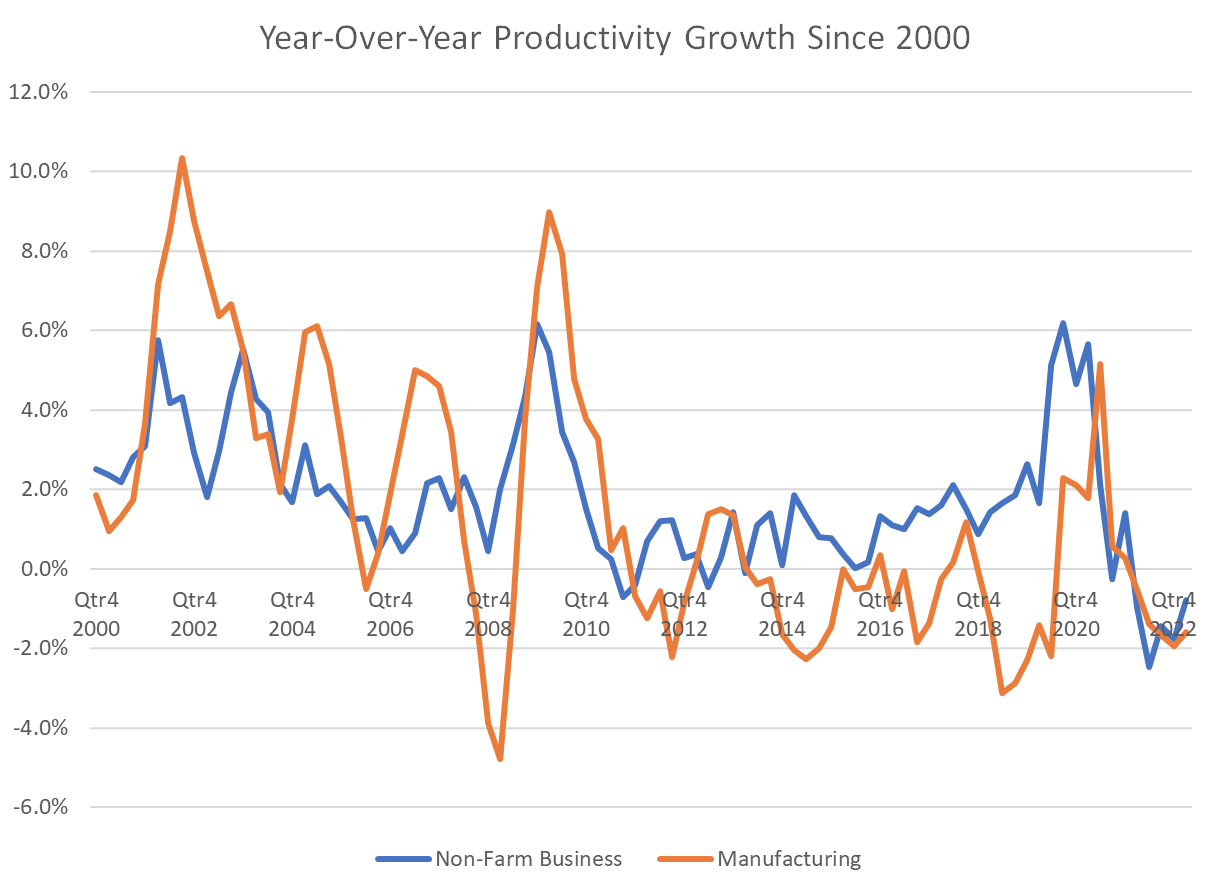The Daily Dish
June 8, 2023
Troubling Productivity Trends
It is useful to check in on the data for productivity growth periodically. Productivity growth lies at the intersection of most of the broader economic challenges. If productivity growth is rapid, firms can pay higher wages without placing upward pressure on prices. In the near-term, this makes it easier, for example, for the Federal Reserve to hit an inflation target in a tight labor market.
Over the longer term, that combination means rising real wages and a better standard of living. Paul Krugman famously said that in the long run productivity growth isn’t everything, but it is nearly everything.
One of the reasons to be concerned about the unsustainable fiscal trajectory is that it reflects an ever-larger appetite for federal spending. The Congressional Budget Office has estimated that if a dollar is transferred from private-sector investment to public-sector investment, about one-half of the productivity gain is lost. So an ever-larger government is a productivity headwind even if it is focused on investing in the future. The reality is that the vast bulk of federal spending is to subsidize consumption, which has zero productivity effect.
The fiscal outlook is a real reason to be worried about the future of productivity growth.
Indeed, there is reason to be concerned already. The graph displays the year-over-year labor productivity in the non-farm business (blue line) and manufacturing (red line) sectors since the 4t quarter of 2000. Ominously, year-over-year productivity growth in the non-farm sector has been negative for five consecutive quarters – the first time this has happened in this century. In the near-term this makes the Fed’s inflation fighting efforts more difficult. Over the longer-term is bodes poorly for the quality of sustained growth in the United States.
The manufacturing sector is perhaps even more of a concern. Outside of a brief, pandemic-related rally it has been mired in a productivity slump since the Great Recession. The administration has placed a great emphasis on manufacturing jobs and producing more domestically. It would be better if this was accompanied with the kind of productivity growth that will generate rising real wages.
Fact of the Day
In 2021, the UK was the United States’ largest partner in services trade, with U.S. service exports to the UK valued at $67.8 billion.











